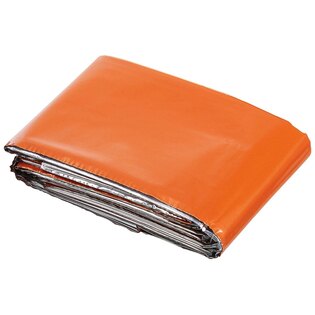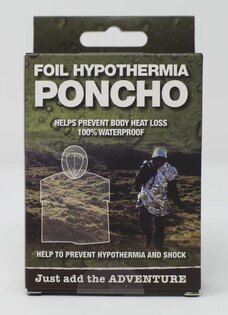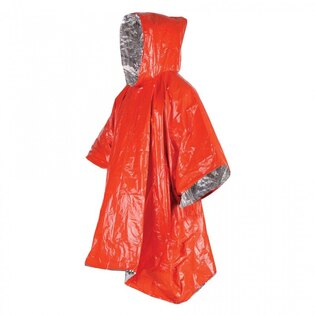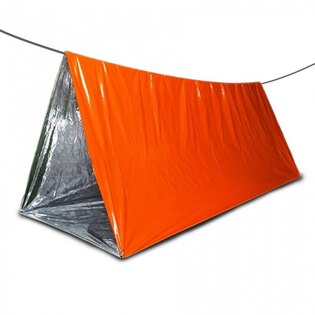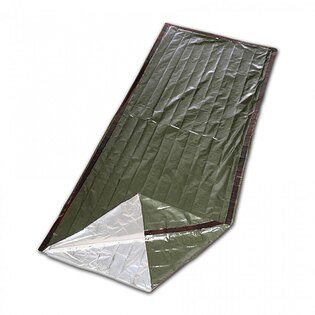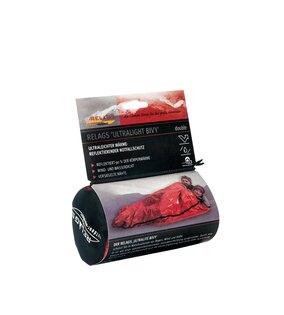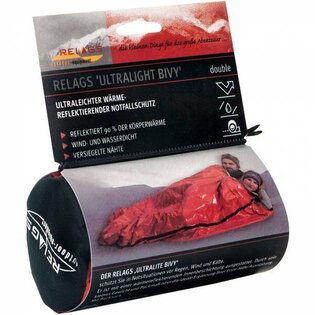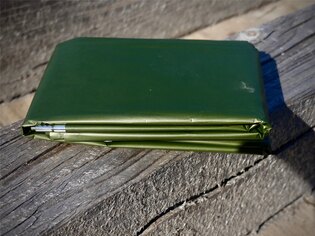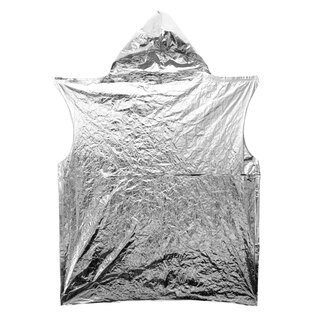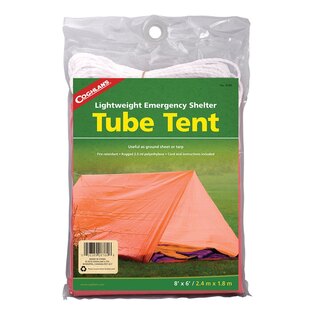Frostbite Is Not Just a Winter Problem: How to Recognize, Treat, and Prevent It
Even in April, conditions in the mountains can feel like winter: cold, wind, moisture—and underestimated gear. A few hours in the wrong clothing is all it takes for frostbite to become a serious issue. And no, it doesn’t only affect high-altitude expeditions. You can encounter it on a regular hike, ski tour, or even during prolonged outdoor work. In this article, we break down what frostbite does to the body, how to recognize the symptoms, provide first aid, and—most importantly—how to prevent it.
Prevention: Your First and Best Line of Defense
Don’t forget to:
- Keep your extremities dry and warm.
- Dress in layers—with a windproof outer shell.
- Don't overlook accessories: hat, gloves, neck gaiter, warm socks.
- Drink warm, sweet fluids regularly.
- On multi-day treks, wash your feet—blisters from dirt and friction can increase frostbite risk.
- Monitor your own exposed areas—and check in with others.
The best first aid is the one you never need to give.
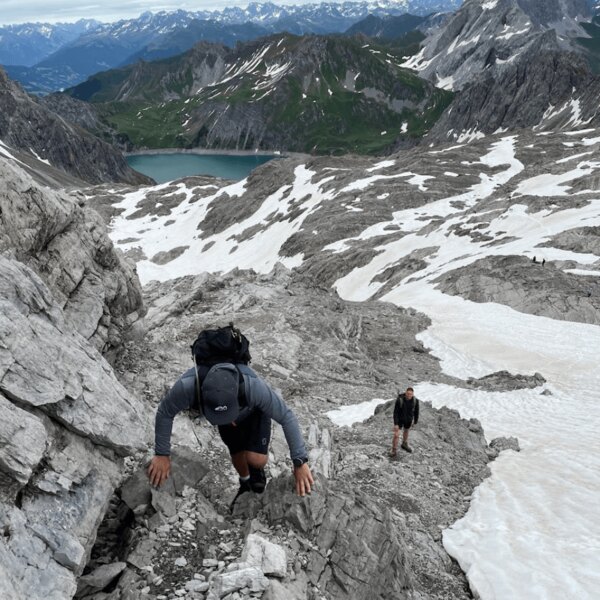
A classic high-risk environment for frostbite: snow, wind, elevation, and sustained effort. Photo: Rigad
What Happens During Frostbite
Frostbite is tissue damage caused by exposure to low temperatures. It typically affects fingers, toes, ears, the nose, and cheeks—areas with high surface-to-volume ratios and lower blood circulation. In the cold, blood vessels constrict, reducing blood flow. Once tissue drops below a critical temperature, ice crystals begin forming, damaging cellular structures.
Stages of Frostbite
- First degree:
Pale, tingling, burning, or itchy skin that may swell slightly. Skin becomes red after warming.
⮕ Fully reversible, affects only the outermost skin.
- Second degree:
Blisters form—clear or milky—skin feels numb.
⮕ Affects the superficial layers. Can often be managed with self-care.
- Third degree:
Skin hardens and turns gray-blue or black. No sensation in the area.
⮕ Tissue death begins. Requires medical attention.
- Fourth degree:
Frostbite penetrates deep into muscles, tendons, or even bone.
⮕ High risk of permanent damage or loss.
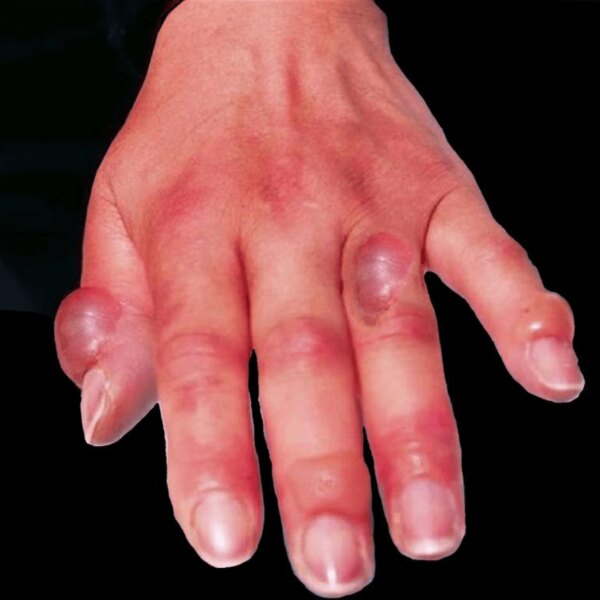
Second-degree frostbite: clear blisters and reduced sensation in the affected area. Photo: Wikimedia Commons
When Frostbite Occurs
When frostbite sets in, context matters. If you have access to shelter and warmth (e.g., cabin, bivy, or windbreak), you can begin warming the affected area and treating the injury. But if you must remain outdoors in freezing conditions, do not attempt to warm the area. Rewarmed tissue becomes fragile and extremely painful—and re-freezing it may cause irreversible damage.
In practice, it’s not just about knowing what to do, but when to do it.
🧭 How to Prevent Frostbite on a Multi-Day Trek
- ✅ Prevention is key.
- 🦶 On a multi-day trek, regularly wash your feet – dirt and blisters increase the risk of frostbite.
📍 Can I Return?
- Warm the affected area with your own body heat (e.g., armpits).
- Loosen or change wet clothing.
- Have a sweet and warm drink.
- If color and sensitivity do not return within 10 minutes, head back to a cabin or other safe place.
📍 Unable to Return?
- Do not thaw the frostbite yet – if it refreezes, serious tissue damage can occur.
- You can walk on a frozen foot, but not on a thawed one – it is fragile and painful.
- Reach your destination as soon as possible and thaw there – do not delay thawing.
How to Safely Thaw Frostbite
Thawing frostbite is appropriate only if there’s no risk of re-freezing. These guidelines are simple but crucial:
🩺 How to Safely Thaw Frostbite
- Thaw only if there is no risk of refreezing.
- Use warm water at a temperature of 40–42°C, ideally with a disinfectant (e.g., potassium permanganate or Betadine).
- Immerse the frostbitten area in water and leave it until sensitivity and blood circulation are restored (usually 20–40 minutes).
- Do not use fire, hot objects, or rubbing to warm – it may damage the tissue.
- If there is pain, it is possible to administer Ibuprofen or Aspirin (for children under 15, only Nurofen).
When to Seek Medical Help
Not all cases require emergency care, but some clearly do. Get medical attention if:
- The area remains numb or lacks circulation.
- Blisters form—especially with blood inside.
- Skin turns dark purple, gray, or black.
- The person is hypothermic, disoriented, or extremely fatigued.
When in doubt, always consult a healthcare professional.
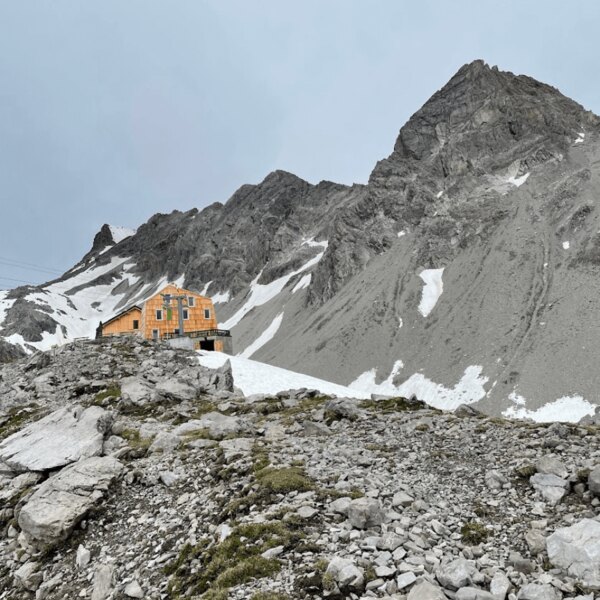
The option to return to shelter significantly increases the chances of safe thawing and recovery. Photo: Rigad
Final Thoughts
Frostbite can happen fast—especially in a mix of cold, wind, moisture, and fatigue. While many cases can be managed without emergency help, they require quick and informed action. Preparation, the right gear, early recognition, and knowing how to respond can make all the difference. In remote areas where help is far away, these skills are vital.
Readers are further interested



























































































































